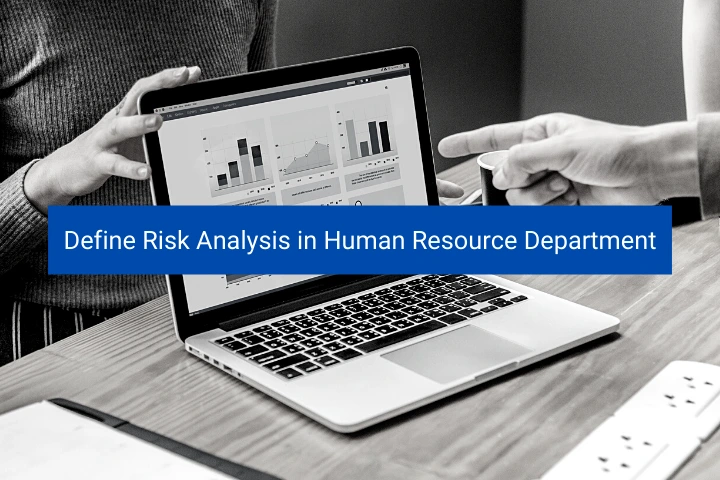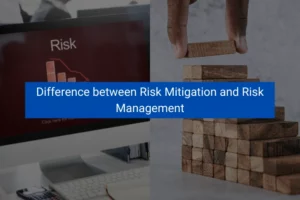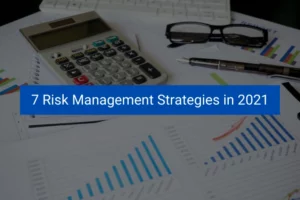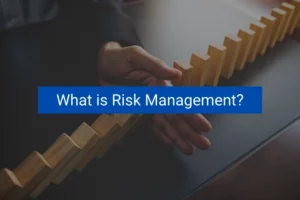Regardless of your professional job or industry, the decision-making process is important. You can improve soft skills like critical thinking and problem-solving by analyzing risk. In this post, we'll look at Risk Analysis, including How to Perform a Risk Analysis and How it Affects Human Resources.

What is Risk Analysis?
Risk analysis is a strategy for identifying and evaluating elements that may threaten a project's or goal's accomplishment.
This technique also aids in the definition of preventative actions to lower the likelihood of these factors occurring, as well as countermeasures to successfully deal with these restrictions when they arise, in order to avoid potential negative repercussions on the company's competitiveness.
It aids in the detection of potential issues that may occur during the course of a project or procedure. You can use risk analysis to:
- Mitigate the consequences of a harmful incident.
- Before starting a project, determine whether the advantages outweigh the risk.
- Decide how the company will respond in the case of an emergency or other adversity.
- Remove risk during a process.
In the decision-making process, risk analysis is a useful tool. It enables you to assess the potential benefits and drawbacks of each option, assess the possibility of problems arising, and determine whether to proceed despite the risks. You can choose how to minimize potential dangers and even design a full preventative plan once you've discovered them.
Risk Management | Types of Risk Management | Importance of Risk Management Click Here>>>
Risk analysts frequently collaborate with forecasting experts to reduce the likelihood of future unfavorable consequences. All businesses and individuals are exposed to a certain level of risk; without risk, the benefits are less likely to be. The issue is that taking too much risk can result in failure. Risk analysis allows you to strike a balance between taking risks and minimizing them.
How to Perform a Risk Analysis?
You can follow these 6 steps to analyze risk in most cases:
1. Determine the Risk
Make a list of potential dangers you might face as a result of the course of action you're thinking about. Because there are so many potential causes of difficulties, make sure to be as thorough as possible when assessing these risks. To account for all threats, organize a brainstorming session with team members who may have various points of view. Inquire about other teams' experiences analyzing risks for similar projects.
You can also utilize techniques like a SWOT analysis (Strengths, Weaknesses, Opportunities, and Threats), which stands for Strengths, Weaknesses, Opportunities, and Threats. This study enables you to construct a list of internal and external elements that may have an impact on a project. The elements could be both good and negative, allowing you to accurately assess risk and evaluate positive impacts that could assist you to mitigate such risks.
2. Define the different levels of uncertainty.
After you've identified potential risk sources, the following step is to figure out how much uncertainty each one entails. It's tough to estimate uncertainty because there's so much variance with each potential risk. However, it's critical to evaluate the impact of each prospective risk's uncertainty and to determine how large that influence might be.
You may not know the exact price a new rival will charge for their goods, but you may approximate it by adding up the costs of production, marketing, and distribution, among other things.
3. Calculate the influence of uncertainty
You can assess the consequences of risk once you've recognized the sources of risk and the levels of uncertainty connected with them. The simplest straightforward way for estimating risk value is to multiply the chance of an event occurring by the cost of the event.
Risk value = Probability of event x Cost of event
Let's imagine you want to analyze the likelihood that the cost of a component of your product will skyrocket. Based on market conditions, you estimate that the event has a 75% chance of occurring. If the component's price rises by $100,000, the cost to your company will rise by $100,000. The risk value would be calculated as follows:
Risk value = 0.75 x $100,000
Risk value = $75,000
When analyzing risk, it is critical to be thorough. To make an accurate assessment of possible losses, gather as much information as possible regarding the potential costs and possibilities of various occurrences occurring.
Other risk management tools, such as a risk assessment matrix, can help you identify project risks and decide how to handle them. If you don't have access to current data or predictions, historical data can be a good reference.
7 Risk Management Strategies in 2021 Click Here>>>
4. Finish the risk assessment model.
You should now have the fundamental model for performing a risk analysis after identifying hazards and estimating levels of uncertainty. By gathering all of your inputs, which represent your uncertainties, you may create a comprehensive model. Then assess outputs, which are the results of various uncertainties and the possibility of one or more occurring during the project. Because your inputs are estimates, the outputs will be ranges rather than exact results.
Model simulation utilizing a computer program can be used to dig further into the results. A program like this may detect each risk and its likelihood, then calculate the odds of various outcomes. Each program calculates the model's output for each of the uncertain inputs using a possible value. Simulations can generate an average outcome value, but they're also valuable for examining the possible range of possibilities, especially when the model has numerous sources of uncertainty that could combine in unanticipated ways.
5. Examine the outcomes
Once you get your results, you can decide how to interpret them, which may vary depending on the sort of risk you are measuring. Use a chart or graph to summarise the possible outcomes. Visuals aid in the quick and efficient communication of potentially complex statistical data.
Another valuable method for examining the outputs of a risk analysis model is sensitivity analysis, which employs mathematical software to assign uncertainty in the output to different assumptions in the model's input.
6. Put the answer into action
Find the answer with the fewest risks and put it into action. This could imply moving on with a project that is constrained by particular criteria or declining to start one because the risks exceed the benefits. You should also be prepared for a variety of other obstacles that may develop during the process that you did not anticipate in your analysis. You should check your progress on a frequent basis to ensure that you're sticking to the suggested solution and to assess any changes in the project so that appropriate adjustments can be made.
Another useful strategy for implementing a solution is "Plan-Do-Check-Act (PDCA)" The following are the four phases of this cycle:
- Plan: Make a risk-reduction strategy.
- Do: Try out the answer on a small scale first.
- Check: To ensure the solution's success, examine the outcomes on a modest scale.
- Action: Put the answer into action on a large scale. As part of the cycle, keep an eye on things and make adjustments as needed.
Risk Analysis in Human Resource Department
These days, the organizational game is changing at a breakneck pace. Today's HR manager collaborates with line management to solve critical business concerns. As a result, the Business HR role has emerged in recent years.
Risk Mitigation | Type of Risk Mitigation Click Here>>>
Change is one of the most common aspects of today's organizations. This transition is fraught with danger. As a result, it is critical for human resource managers to be aware of these dangers.
In today's world, risk managers are increasingly united in their views on HR's role in risk management. For good reason, HR professionals are collaborating with those in the risk management department.
But how do HR professionals contribute to risk management? Assume that there has been a steady decrease in production that has been noticed by upper management. After identifying the risk, i.e. a decrease in productivity, the HR manager moves on to determining the human part of the problem. A discrepancy between what should be done operationally and what is being done operationally could be the source of the risk.
After the risk has been discovered, the HR manager questions the line managers and their personnel to assess and prioritize the risk. Finally, if necessary, the HR manager strategizes how to cope with the risk. One such option is to provide workers with training. Human resource professionals play an important role in risk management in this way.
Performance Consulting
Performance consulting discusses the link between the HR executive and the strategic and operational business managers. Managers and other members of the organization collaborate closely with performance consultants. Their primary responsibility is to work alongside managers and earn their trust, i.e. to foster trust relationships among managers. These partnerships are developed by senior managers, line managers and supervisors, top leadership, and topic experts from diverse groups inside the organization. They also encourage customers and suppliers to form collaborations.
Risk management, as we all know, entails risk identification, assessment, analysis, and prioritization. In addition, the HR executive plays an important role in risk management. One method of dealing with danger is to avoid it. Because HR managers only deal with the human side of the risk. In this case, risk control strategies would include succession planning, executive coaching, and development, all of which are intended to ensure that a business is appropriately prepared to deal with the risk.
Furthermore, the HR executive plays a critical role in risk management by defining traits for key jobs or leaders inside the firm. Employee turnover is also a potential risk from an HR standpoint; training, developing, and mentoring employees within the organization to boost their work ownership and morale for future positions; employee turnover is also a potential risk from an HR standpoint.
Conclusion
The management of risks in the workplace is critical. For the organization, risks can be both favorable and bad. It has the potential to help as well as harm the organization. The HR department must always be aware of the potential hazards that can arise from various activities and devise strategies to avoid such risks that could hurt the company. Every task that employees conduct comes with its own set of dangers. In order to reduce losses, the HR department must endeavor to avoid risks. Recruitment, selection, planning, pay, training, and development, among other things, can all pose risks. Every employee should be aware of the HR risks and take the required precautions to avoid them.
For Human Resource, Payroll and many more HR Services, visit our website https://lingueeglobal.com/



